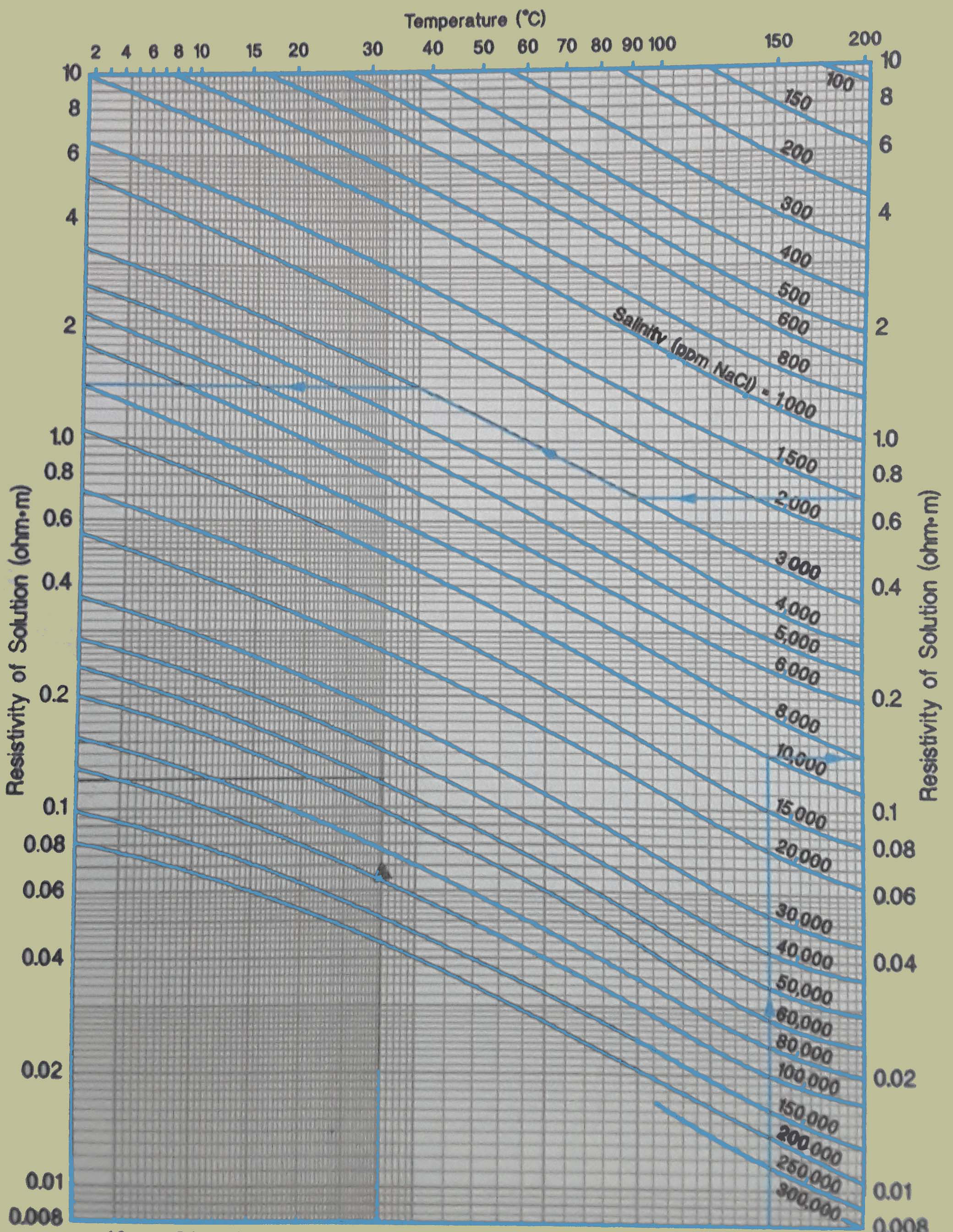Site Navigation
Oilfield expertise at your desktop
Logging tools environmental corrections
In real world logging ,its not easy to determine true gamma ray, neutron porosity,bulk density and true resistivity of the uninvaded zone precisely for variety of reasons. There are various Factors affecting these responses which includes hole size, mud density, bed thickness, depth of invasion, bore hole mud salinity, formation pressure , formation salinity, formation temperature, and tool stand off.
Uncorrected values of these curves could have strong impact on formation evaluation and must be corrected before starting evaluation.
There are some pre-calculations before starting environmental correction,these pre-calculations are explained below:-
1.Determination of Geothermal Gradient:-Geothermal gradient is needed to calculate temperature at any particular depth in well bore. Temperature increases with depth, and the temperature gradient of a particular region depends upon its geologic or tectonic activity . As a rule of thumb higher tectonic activity leads to higher geothermal gradient. Geothermal gradients are commonly expressed in degrees Fahrenheit per 100 feet (0F/100′). In case if geothermal gradient of an area is not known, then there are standard charts and formula are available to get geothermal gradient.
Information available in log header may help in calculating geothermal gradient using equation below:
Where:
BHT = bottom hole temperature (from header)
TD = total depth (Depth-Logger from header)
Tms = mean surface temperature
gG =Geothermal gradient
Note that both the chart method and the formula method require a value for mean surface temperature (Tms). This refers to the average annual temperature of a region, and not the temperature at which resistivity measurements were made during the logging job
Determination of Formation Temperature (Tf):
Once the geothermal gradient (gG) has been established, it is possible to determine the temperature for any particular depth. This is often referred to as formation temperature (Tf). Formation temperature can be calculated using the following equation.
Where:
Tms = mean surface temperature
gG = geothermal gradient
D = depth at which temperature is desired
Determining Rmf from Rm
Correcting Resistivity for Temperature:
Resistivity decreases with increasing temperature, and hence value of Rmf and Rw determined at one depth needs to be corrected for the changing formation temperature (Tf) through the wellbore. It is vital that formation water resistivity (Rw) be corrected for temperature,Failing to correct Rw to a changing temperature will result in erroneous values of water saturation (Sw). Therefore, it is possible to calculate a hydrocarbon-bearing zone as a wet zone or wet zone as hydrocarbon bearing zone if the temperature correction is not applied.
Correction can be applied using the charts available with vendors or by applying Arps equation . Charts provided by vendors may also be used to determine the resistivity of a solution (such as Rm, Rmf, Rw, etc.) at a given temperature when the NaCl concentration of that solution is known, and vice versa. An example chart for conversion is given below:-
In the above chart temperature is given on top in Degree Celsius,Enter the chart from top at provided temperature and on Y-axis enter provided water resistivity.Point of intersection of both the entries is the equivalent NACL content of water in parts per million.Go along the salinity line to required temperature at which you need to determine resistivity,resistivity on Y-axis in that zone is water resistivity at that required temperature.
Resistivity conversion can be done mathematically also using Arps equation.Arps equation for converting resistivity at given temperature to resistivity at another temperature is given below:-
R2 = R1 * (T1+k)/(T2+k)
where:
R2 = resistivity value corrected for temperature
R1 = resistivity value at known reference temperature (T1)
T1 = known reference temperature
T2 = temperature to which resistivity is to be corrected
k = temperature constant
k = 6.77 when temperature expressed in 0F
